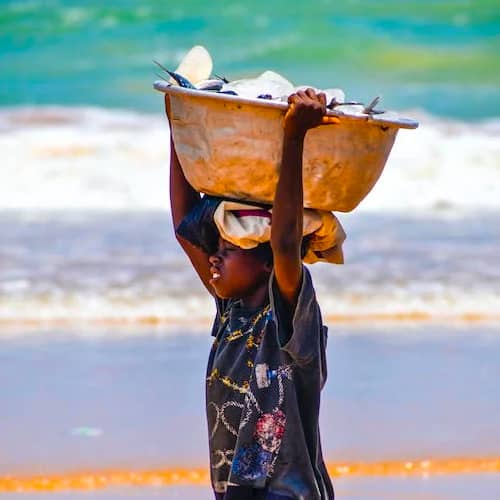What Is Child Labor?
The question “what is child labor?” may seem outdated, a problem that belongs in the last couple of centuries rather than today. Since its zenith in the Industrial Revolution, child labor has rightly seen opposition, but it is still a major problem across the globe. Approximately 265 million children in the world—nearly 17 percent of the world’s child population are currently involved in child labor.[1] While progress is being made in resolving this issue, child labor remains present and prevalent, especially in the countries with the lowest standards of living. For example, sub-Saharan Africa has the highest incidence of child labor.[2]
So, what is child labor?
Not every kid who works is considered a child laborer. It’s considered a positive thing when children who are above the minimum age work at a job that does not negatively affect their health, development or schooling. This includes employment at a family business or earning extra pocket money after school or during breaks. These jobs assist a child in developing skills and experience, helping them become more productive members of society.
The International Labour Organization defines child labor as “work that deprives children of their childhood, their potential and their dignity, and that is harmful to physical and mental development.”[3] This includes jobs that are dangerous morally, physically or mentally to children and jobs that interfere with school, preventing a child from getting an education.[4]
A heartbreaking example of child labor is in commercial fishing. According to the U.S. Department of Labor, workers at sea are among the most vulnerable for child labor. James Kafi Annan’s story is typical of the workers trapped in the commercial fishing industry.
In Ghana, James was the youngest of 12 children, many of whom had already been given away to work. James was six when his father sent him to work in the fishing industry. James was first trafficked with five other children: of the six, only three lived. Many children died from the abuse from their traffickers or the rigorous work. These children, including James, worked extremely long hours on Lake Volta—3 am to 8 pm—with only one meal a day. James regularly got painful diseases that went untreated since he was denied medical care. When he asked for even a small concession from the boss, he was beaten, and despite all the hard work, he was not allowed to sleep because he had to do other tasks like mend nets or clean fish. It took James seven years to escape this slavery.[5]
Click here, to read more about this article.
Click here, to read more blogs in Gospel for Asia.Com


Comments
Post a Comment